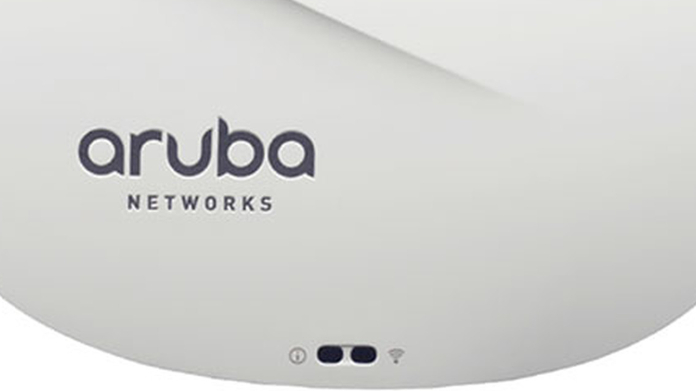Hewlett Packard Enterprise (HPE) has introduced a new open-source data converter for Microsoft Azure to enable IoT data going via Aruba Wi-Fi access points to be used in sundry business intelligence and analytics applications in the Azure platform. The firm’s Aruba business has worked with Canadian open source specialist reelyActive on the solution. It is available as part of Aruba’s Edge Services Platform product.
The new connectivity fix pairs Aruba’s bi-directional IoT Transport tool with reelyActive’s Pareto Anywhere open-source converter to reformat IoT data, including telemetry measurements, to be compatible with Azure applications. It does away with the need for custom engineering, and reducing costs and time associated with conventional integration methods.
The solution has seen Aruba add IoT radios to its Wi-Fi access points to support IT and IoT data, and also work with Microsoft to develop the IoT Transport facility, which encodes IoT data from its Wi-Fi access points into a format compatible with its Azure IoT Hub – specifically as base64 strings encapsulated in JavaScript (JSON) format. The Pareto Anywhere converter decodes the strings and abstracts the data so it is “intelligible [and… consumable” in Azure apps.
HPE said the converter’s abstraction function allows customers to deploy hybrid IoT systems, consisting of different devices and protocols – because “all of the data appear in a homogeneous format regardless of their origin”. The Pareto facility can be deployed from GitHub “in a few simple steps” to process data via the IoT Transport tool – which is enabled “on-the-fly”. The solution is intended for resellers, integrators, and users looking to migrate IoT workloads to Azure.
A statement explained: “Integrating data from legacy IoT devices with IoT cloud services can [take] months. There are dozens of IoT protocols and non-interoperable physical layers with which to contend. It is cost prohibitive to replace or retrofit legacy devices with new cloud-native software. This is because data from non-IP based IoT devices needs to be securely streamed and terminated in a form optimized for use with Azure IoT applications…
“Once received at the Azure IoT Hub, all of the IoT payloads need to be separately formatted for use by Azure IoT applications. If, at a later date, another IoT protocol needs to be supported, then the process starts anew. The integration process can take months, and the cost, complexity, and security vulnerability of hardware gateways can make the economics challenging.”
Michael Tennefoss, vice president of IoT at Aruba, said: “IoT Transport for Microsoft Azure transforms any Aruba IT network into a secure Azure gateway that lands at the Azure IoT Hub. The beauty of the design is that customers can send BLE, EnOcean Alliance, and similar data from legacy or new IoT devices directly to Azure, without adding any gateway hardware or parallel network infrastructure. If business needs change tomorrow, or next year, then new IoT devices can be incorporated, additively, without ripping or replacing any IT infrastructure.”
Jeffrey Dungen, co-founder and chief executive at reelyActive, said: “The expertise we’ve embedded into this solution allows organizations to achieve in an hour what often required months of custom engineering… Customers can tap into our expertise to further accelerate adoption and application towards their specific objectives, leveraging the reelyActive team on-demand as an extension of their own, through a convenient subscription model.”
Tony Shakib, general manager for IoT at Microsoft, said: “Used in tandem, IoT Transport for Microsoft Azure and Pareto Anywhere for Azure will significantly cut the time required to migrate IoT workloads to Azure… They provide the foundation for a new class of pre-built… visualization, control, monitoring, predictive maintenance, and alerting applications that customers will subscribe to on-demand.”

